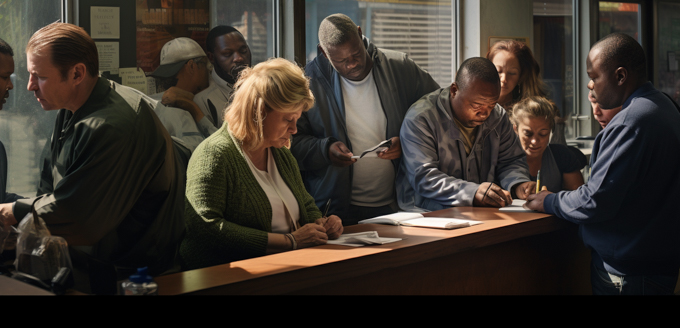When you’re trying to navigate the maze of public assistance programs, things can get tricky fast. Let’s break down what’s up with welfare and TANF so you can get a clearer picture of what’s available and what might be right for you or someone you know.
Understanding Welfare: A Brief History
Let’s time travel a bit, shall we? Welfare as we know it began way back in the 1930s during the Great Depression. The government stepped in with the Social Security Act to help families hit hard by the economic downturn. This program was meant to be a safety net, offering financial aid to the elderly, the poor and the unemployed.
Fast forward a few decades and you’ll find the original welfare system evolved a bunch. It became a hot topic in political debates, with many arguing that it needed reform. The argument? Some folks believed the system made it too comfy for people to stay on welfare instead of joining the workforce.
What is TANF? Definition and Objectives
In 1996, the welfare landscape got a serious makeover with the introduction of the Temporary Assistance for Needy Families (TANF) program. TANF swapped out the old Aid to Families with Dependent Children (AFDC) with a mission to get people off assistance and into jobs.
So, what’s the deal with TANF? It’s about giving temporary help to families in need while also promoting two main goals: responsibility and self-sufficiency. TANF funds are designed to provide necessary support, but also to encourage employment and stable family units.
Comparing Welfare and TANF: Key Differences
Alright, put your comparing caps on because we’re diving into how welfare and TANF stack up against each other. The OG welfare gave long-term assistance with fewer strings attached. It was like a steady friend you could rely on for long-term support. TANF, on the other hand, is that friend who helps you out but also nudges you to get back on your feet asap.
TANF comes with a time limit (usually up to 60 months over a lifetime), and it places a stronger emphasis on getting a job. It’s also not an entitlement, which means not everyone who’s eligible gets the help. The funding is a block grant to the states, who then have the power to decide how to spend that cash.
The Impact of TANF on Families in Need
So, has TANF been a game-changer for families? It’s a mixed bag, to be honest. Some families have definitely benefited from the push towards employment and self-reliance. TANF has helped a number of people find their footing and wave goodbye to public assistance for good.
But not everyone’s throwing a TANF party. Many families find that the time limits and job requirements are tough to meet, especially when jobs that pay a living wage are scarce. They sometimes end up worse off than before, struggling to make ends meet without the safety net they once had.
Challenges and Criticisms of the Current System
No system’s perfect, and TANF is no stranger to side-eyes and head shakes. One of the biggest criticisms is that it hasn’t kept up with inflation, which means the buying power of the assistance provided has dropped, leaving families with less real money to cover the basics.
Another concern is that every state has different rules and uses their TANF funds in very different ways. This creates a sort of lottery based on where you live. Plus, a chunk of TANF funds doesn’t even go directly to cash assistance—some of it’s used for other state programs, which can dilute the impact on direct aid for needy families.
In the end, knowing the ins and outs of welfare and TANF can help you or someone you care about make sense of public assistance and plan for a steadier future. Keep asking questions, keep fighting the good fight, and remember, knowledge is power.



